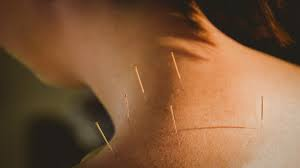Acupuncture and Cupping Therapy for Pain Management and Injury Recovery
Acupuncture is a powerful and time-tested healing therapy that involves the precise insertion of ultra-fine needles into specific points on the body to address a wide variety of health problems. Rooted in traditional Chinese medicine (TCM) for over 2,000 years, acupuncture has become increasingly popular in the Western world due to its ability to support both physical and emotional well-being naturally. Whether you’re dealing with acute pain, chronic conditions, or seeking overall balance, acupuncture offers a holistic approach to healing.
The practice of acupuncture is based on the concept of balancing and unblocking the flow of energy, or “qi” (pronounced “chee”), throughout the body. Blockages or imbalances in qi are believed to be the root cause of many health issues. By targeting specific acupuncture points, practitioners aim to restore harmony within the body. Modern scientific research suggests that acupuncture stimulates the nervous system, prompting the release of natural painkillers, endorphins, and other chemicals that promote healing and relaxation.
Acupuncture is most commonly sought after for its effectiveness in treating various types of pain, but its benefits extend far beyond that. Some of the conditions acupuncture can help with include:
- Sports injuries such as sprains and strains in muscles and tendons, including whiplash.
- Chronic pain that affects daily life, such as lower back pain, neck pain, and shoulder pain.
- Joint pain and inflammation caused by conditions like osteoarthritis (OA), knee pain, or elbow pain.
- Headaches and migraines, offering drug-free relief for tension or severe migraine episodes.
- Wrist pain and carpal tunnel syndrome, especially for those with repetitive motion injuries.
- Ankle pain and foot pain, often linked to injuries or conditions like plantar fasciitis.
When you visit our office for acupuncture, you can expect a relaxing and therapeutic experience. Each session typically lasts 20–30 minutes, during which fine, sterile needles are inserted about 2–4 centimeters into the skin. The needles are left in place for 15–25 minutes, depending on the specific type of acupuncture being performed and the condition being addressed. In some cases, your practitioner may manually manipulate the needles or use gentle electrical stimulation (known as electroacupuncture) to enhance the effects and promote faster healing.
Discover how acupuncture can improve your quality of life by addressing pain, stress, and a wide range of health conditions. Schedule your acupuncture session today to experience this ancient, yet scientifically-backed, method of healing firsthand!


CUPPING THERAPY
You may have noticed athletes sporting circular bruises during high-profile events like the Olympics. These distinctive marks are the result of cupping therapy, an ancient healing technique with roots in traditional medicine. While the bruises may appear alarming, the process is minimally painful and offers numerous health benefits. Cupping therapy works by using suction to increase blood flow, which can promote healing, reduce pain, and enhance athletic recovery.
The technique involves placing cups on the skin to create negative pressure. This suction can be achieved by heating the cup or using a specialized suction device. Once the cups are applied, they remain on the skin for several minutes, drawing blood to the area and kickstarting the body’s natural healing processes.
“Blood flow is the body’s way of naturally healing,” explains Houman Danesh, M.D., an assistant professor of anesthesiology and rehabilitation medicine at Mount Sinai Hospital. Dr. Danesh often incorporates cupping into mainstream pain management therapies, noting that the increased blood flow can help “jumpstart or restart a blunted healing response.”
Another way to think about cupping is as “sterile inflammation,” according to Reid Blackwelder, M.D., past president of the American Academy of Family Physicians. The process draws blood from vessels into the tissue, mimicking an injury and triggering an inflammatory response. This mobilizes antibodies and other healing agents to the area, promoting recovery and reducing pain.
Cupping therapy is particularly effective for addressing pain-based conditions, making it a popular choice among athletes and individuals seeking drug-free relief. Common conditions treated with cupping include:
- Sprains and strains, including sports injuries and whiplash.
- Lower back pain, one of the most common pain complaints.
- Plantar fasciitis, which causes heel pain and foot discomfort.
- Shoulder pain, often linked to overuse or injury.
In addition to pain management, cupping therapy has gained traction among athletes for its ability to boost muscle recovery. By increasing blood flow to fatigued or damaged muscle fibers, cupping may help speed up recovery after intense workouts or competitions. It’s no wonder so many elite athletes have turned to cupping as a part of their recovery routine!
If you’re looking to reduce pain, improve recovery, or support your overall wellness, consider trying cupping therapy. This time-tested treatment offers a holistic approach to healing that complements both traditional and modern therapies. Book your cupping session today to experience its benefits firsthand!

Acupuncture Certification through the National Board of Chiropractic Examiners
Copyright by Pain & Injury of Utah 2025. All rights reserved.

Design by:

